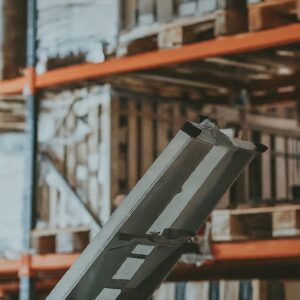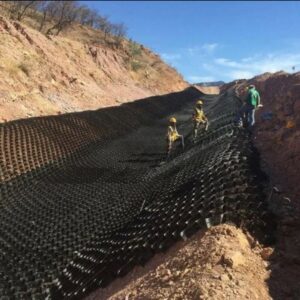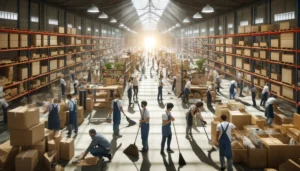
Climbing to New Heights: A Comprehensive Guide to Industrial Ladders
Ever had one of those heart-stopping moments when you’re perched precariously on a ladder, wondering if it’s sturdy enough to hold you? As someone who’s
Navigating elevated risks in the workplace is a critical aspect of ensuring work safety. Customized ladders and platforms play a vital role in enhancing safety measures and mitigating potential hazards. In this article, we will explore the importance of customized ladders and platforms in navigating elevated risks, and how these safety equipment can contribute to creating a secure working environment. By understanding the significance of customized ladders and platforms, employers can optimize workplace safety and minimize the occurrence of accidents and injuries.
Safely Ascend and Thrive: Empowering Work Safety with Customized Ladders, Platforms, and Safety Equipment
When it comes to workplace safety, it is essential to acknowledge the potential risks associated with elevated tasks. Elevated risks refer to activities performed at heights, such as working on rooftops, scaffolding, or high platforms. These tasks pose a higher degree of danger due to the increased likelihood of falls, slipping, or other accidents. Workers involved in construction, maintenance, painting, or any job requiring them to work at heights need to be aware of these risks.
By understanding the specific hazards related to elevated tasks, employers can implement appropriate safety measures. This includes providing employees with the necessary training and equipment to safely perform their duties. Customized ladders and platforms offer a solution tailored to fit the unique requirements of different work environments. They provide workers with a stable and secure structure to navigate elevated risks confidently.
Moreover, identifying the elevated risks prevalent in a particular workplace enables employers to take proactive steps to minimize potential dangers. By conducting thorough risk assessments and implementing suitable safety protocols, employers can create a culture of safety and reduce the likelihood of accidents.
Customized ladders and platforms are essential components in promoting work safety. They offer several benefits that contribute to the overall well-being of employees and the success of any organization. One notable advantage is their ability to provide a sturdy base for workers to perform tasks efficiently and comfortably at elevated heights.
Unlike generic ladders and platforms, customized solutions can be tailored to fit specific requirements. They take into consideration factors such as height, weight capacity, work area dimensions, and the nature of tasks performed. By incorporating these specifications, customized ladders and platforms ensure optimal safety and productivity. Workers feel more confident and secure with a purpose-built structure that meets their needs, resulting in enhanced efficiency and job satisfaction.
Additionally, customized safety equipment can address common challenges associated with elevated risks. For example, the design and adaptability of these ladders and platforms can make navigation around obstacles or confined areas more accessible. They can also provide features like anti-slip surfaces, guardrails, or even integrated tools storage to further facilitate safer working conditions.
Effective platforms play a crucial role in enhancing work safety when dealing with elevated risks. These platforms offer stability and support for workers to carry out various tasks efficiently. The key lies in designing and implementing platforms that align with the specific needs of the workplace.
Platform design considerations may include factors such as load-bearing capacities, adjustable heights, ease of installation, and mobility. For instance, workplaces requiring frequent height adjustments may benefit from mobile platforms that are easily maneuverable. These adaptable platforms enable workers to move freely without compromising safety while accessing different areas at various heights.
Furthermore, effective platforms should integrate safety features like anti-slip surfaces, guardrails, and reinforced structures. These additions help prevent falls, slips, and injuries, mitigating the risk of accidents. When properly integrated into the work environment, effective platforms provide a stable base for workers to complete tasks with confidence and peace of mind.
When it comes to navigating elevated risks, choosing the right safety equipment is crucial. Customized ladders and platforms are just one aspect of a comprehensive safety strategy. Employers must consider other essential safety equipment that complements their work environment and tasks involved.
For instance, fall protection harnesses, guardrails, or personal protective equipment (PPE) such as helmets and safety shoes are critical elements that must not be overlooked. Fall protection measures like guardrails can be installed on platforms for added safety in case of slips or trips. PPE ensures workers have the necessary protective gear to minimize injury during accidents. By selecting the appropriate safety equipment, employers can create a multi-layered safety approach that provides comprehensive protection for employees working at elevated heights.
Regular maintenance and inspection of safety equipment is also paramount. Employers should establish routine checks to ensure that ladders, platforms, and other safety devices remain in optimal condition. This proactive approach not only upholds safety standards but also extends the lifespan of the equipment, maximizing its value and usability in the long term.
The effectiveness of customized ladders, platforms, and other safety equipment lies not only in their design but also in how they are used. Adequate training is essential to ensure workers understand how to utilize these tools safely and maintain best practices while carrying out elevated tasks.
Employers should provide comprehensive training programs that cover topics such as ladder usage, platform assembly, proper handling of safety equipment, and the importance of following safety protocols. By equipping workers with the necessary knowledge and skills, employers empower them to navigate elevated risks with confidence and competence.
Maintenance is also crucial for long-term safety. Employers should establish regular maintenance schedules to inspect, clean, and repair customized ladders, platforms, and other safety equipment. This proactive approach avoids potential defects or malfunctions that may compromise worker safety. When workers know that safety equipment is well-maintained and regularly inspected, they can have peace of mind and focus on their tasks.
In today’s ever-evolving workplace the need for effective work safety measures cannot be overstated. Navigating elevated risks requires a comprehensive approach that includes customized ladders platforms and safety equipment. By embracing these solutions companies can optimize the protection of their workers and minimize the potential for accidents or injuries. Customized ladders offer enhanced stability and adaptability allowing workers to safely access elevated areas without compromising their well-being. Platforms provide sturdy and secure spaces for performing tasks at heights ensuring stability and reducing the risk of falls. Safety equipment such as harnesses and guardrails adds an additional layer of protection. Overall investing in customized ladders platforms and safety equipment not only safeguards employees but also promotes a culture of safety within the workplace. Don’t wait until it’s too late; take action now to ensure work safety and protect your workforce.
Customized ladders and platforms play a vital role in enhancing work safety by providing workers with secure and tailored access solutions. These specialized equipment are designed to meet the specific needs of various industries such as construction manufacturing and maintenance. By offering adjustable heights non-slip surfaces and sturdy construction customized ladders and platforms ensure that workers can perform their tasks safely and efficiently at elevated locations. Additionally these custom solutions can be optimized with features like guard rails handrails and safety harness attachment points further minimizing the risks associated with working at heights.
Working at elevated locations entails certain risks that need to be addressed to ensure the safety of workers. Some of the common risks include falls from heights unstable or inadequate working surfaces malfunctioning or improper use of equipment and limited access to emergency exits. Additionally factors such as weather conditions uneven terrain or even psychological factors like vertigo or fear of heights can contribute to the risks involved. Therefore it is crucial to implement appropriate safety measures including the use of customized ladders and platforms to mitigate these risks and protect the well-being of workers.
Custom platforms offer distinct advantages over traditional options when it comes to ensuring work safety. Unlike generic platforms custom platforms can be tailored to fit specific dimensions and requirements making them more efficient and secure for workers. They can be designed with additional safety features such as self-closing gates anti-slip surfaces and enhanced stability. Furthermore custom platforms can be integrated into existing structures enabling seamless access without compromising safety standards. By opting for custom platforms instead of off-the-shelf alternatives businesses can provide a safer and more productive working environment for their employees.
Safety equipment including harnesses helmets and other protective gear plays a fundamental role in navigating elevated risks. These safety devices act as a safeguard against potential hazards by preventing or reducing injuries in the event of a fall or accident. For example a safety harness can prevent a worker from plummeting to the ground in case of a slip or malfunction of equipment. It is essential for employers to provide appropriate safety equipment and enforce strict guidelines regarding its usage to ensure that workers are adequately protected when working at heights.
Promoting a safety culture in the workplace is of utmost importance to prevent accidents and protect the well-being of employees. A safety culture encompasses a set of values beliefs and practices that prioritize the health and safety of workers. When companies foster a safety culture it creates an environment where all employees are actively engaged in identifying and mitigating risks. By encouraging open communication providing regular training sessions and recognizing safety achievements businesses can cultivate a workplace that values and prioritizes the well-being of its workers. A strong safety culture ultimately leads to fewer accidents increased productivity and improved morale within the organization.

Ever had one of those heart-stopping moments when you’re perched precariously on a ladder, wondering if it’s sturdy enough to hold you? As someone who’s

Have you ever battled a muddy mess of a driveway after a heavy rain? Or maybe your gravel path constantly seems to wash away. Traditional solutions like gravel or concrete can be expensive, time-consuming to install, and require frequent maintenance. But what if there was a better way?
Enter GeoCell, a revolutionary cellular confinement system that’s transforming the way we build strong, stable, and long-lasting driveways, paths, and even parking areas.

Spring brings fresh beginnings, warmer weather, and the perfect time for decluttering and dusting off neglected spaces. In the world of warehouse organization, implementing genius cleaning tricks can transform chaos into order. This article explores innovative spring cleaning hacks and decluttering tips tailored specifically for warehouses, shedding light on dust off techniques to optimize efficiency and productivity in your storage space.